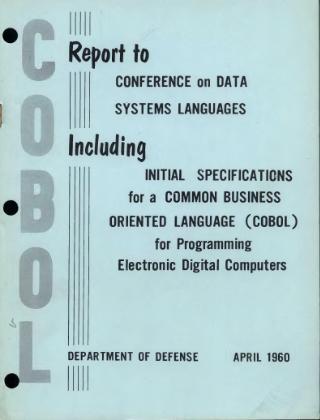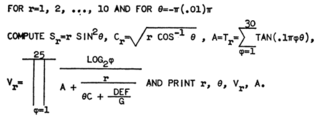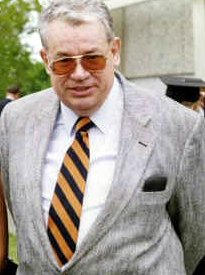Computer programming is the process of performing particular computations, usually by designing and building executable computer programs. Programming involves tasks such as analysis, generating algorithms, profiling algorithms' accuracy and resource consumption, and the implementation of algorithms. The source code of a program is written in one or more languages that are intelligible to programmers, rather than machine code, which is directly executed by the central processing unit. To produce machine code, the source code must either be compiled or transpiled. Compiling takes the source code from a low-level programming language and converts it into machine code. Transpiling on the other hand, takes the source-code from a high-level programming language and converts it into bytecode. This is interpreted into machine code. The purpose of programming is to find a sequence of instructions that will automate the performance of a task on a computer, often for solving a given problem. Proficient programming thus usually requires expertise in several different subjects, including knowledge of the application domain, specialized algorithms, and formal logic.

COBOL is a compiled English-like computer programming language designed for business use. It is an imperative, procedural and, since 2002, object-oriented language. COBOL is primarily used in business, finance, and administrative systems for companies and governments. COBOL is still widely used in applications deployed on mainframe computers, such as large-scale batch and transaction processing jobs. However, due to its declining popularity and the retirement of experienced COBOL programmers, programs are being migrated to new platforms, rewritten in modern languages or replaced with software packages. Most programming in COBOL is now purely to maintain existing applications; however, many large financial institutions were still developing new systems in COBOL as late as 2006.

The Klerer–May System is a programming language developed in the mid-1960s, oriented to numerical scientific programming, whose most notable feature is its two-dimensional syntax based on traditional mathematical notation.
The A-0 system, written by Grace Murray Hopper in 1951 and 1952 for the UNIVAC I, was an early compiler related tool developed for electronic computers. The A-0 functioned more as a loader or linker than the modern notion of a compiler. A program was specified as a sequence of subroutines and its arguments. The subroutines were identified by a numeric code and the arguments to the subroutines were written directly after each subroutine code. The A-0 system converted the specification into machine code that could be fed into the computer a second time to execute the said program.
FLOW-MATIC, originally known as B-0, was the first English-like data processing language. It was developed for the UNIVAC I at Remington Rand under Grace Hopper from 1955 to 1959, and helped shape the development of COBOL.

Malcolm Douglas McIlroy is a mathematician, engineer, and programmer. As of 2019 he is an Adjunct Professor of Computer Science at Dartmouth College. McIlroy is best known for having originally proposed Unix pipelines and developed several Unix tools, such as spell, diff, sort, join, graph, speak, and tr. He was also one of the pioneering researchers of macro processors and programming language extensibility. He participated in the design of multiple influential programming languages, particularly PL/I, SNOBOL, ALTRAN, TMG and C++.
Information Processing Language (IPL) is a programming language created by Allen Newell, Cliff Shaw, and Herbert A. Simon at RAND Corporation and the Carnegie Institute of Technology about 1956. Newell had the job of language specifier-application programmer, Shaw was the system programmer, and Simon had the job of application programmer-user.

Roger D. Moore was the 1973 recipient of the Grace Murray Hopper Award from the Association for Computing Machinery (ACM). It was given "for their work in the design and implementation of APL\360, setting new standards in simplicity, efficiency, reliability and response time for interactive systems."

Per Brinch Hansen was a Danish-American computer scientist known for his work in operating systems, concurrent programming and parallel and distributed computing.
In computer software, a general-purpose programming language (GPL) is a programming language for building software in a wide variety of application domains. Conversely, a domain-specific programming language (DSL) is used within a specific area. For example, Python is a GPL, while SQL is a DSL for querying relational databases.

The history of programming languages spans from documentation of early mechanical computers to modern tools for software development. Early programming languages were highly specialized, relying on mathematical notation and similarly obscure syntax. Throughout the 20th century, research in compiler theory led to the creation of high-level programming languages, which use a more accessible syntax to communicate instructions.
WATFIV, or WATerloo FORTRAN IV, developed at the University of Waterloo, Canada is an implementation of the Fortran computer programming language. It is the successor of WATFOR.
FORMAC, the FORmula MAnipulation Compiler, was the first computer algebra system to have significant use. It was developed by Jean E. Sammet and her team, as an extension of FORTRAN IV. The compiler was implemented as a preprocessor taking the FORMAC program and converting it to a FORTRAN IV program which was in turn compiled without further user intervention.
Jean E. Sammet was an American computer scientist who developed the FORMAC programming language in 1962. She was also one of the developers of the influential COBOL programming language.
AIMACO is an acronym for AIr MAterial COmpiler. It began around 1959 as the definition of a high level programming language influenced by the FLOW-MATIC language, developed by UNIVAC, and the COMTRAN programming language, developed by IBM. AIMACO, along with FLOW-MATIC and COMTRAN, were precursors to the COBOL programming language and influenced its development.

In computing, a compiler is a computer program that transforms source code written in a programming language or computer language, into another computer language. The most common reason for transforming source code is to create an executable program.
Mary Kenneth Keller, B.V.M. was an American Catholic religious sister, educator and pioneer in computer science. She was the first person to earn a Ph.D. in computer science in the United States. Keller and Irving C. Tang were the first two recipients of computer science doctorates.
Albert Eugene Smith (1907-1973) was a computing pioneer who worked for the U.S. Navy following World War II. He founded the Digital Computer Newsletter published by the Navy from 1949 through 1968. Smith also participated in the development of the COBOL programming language.
George H. Mealy was an American mathematician and computer scientist who invented the namesake Mealy machine, a type of finite state transducer. He was also a pioneer of modular programming, one of the lead designers of the IPL-V programming language, and an early advocate of macro processors in assembly language programming.






